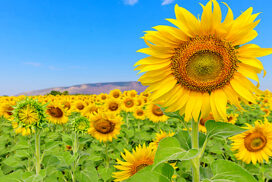The increased water shortage and frequent drought in agricultural ecosystems have caused tremendous problems worldwide, owing to the resulted yield losses for many crops.
It is therefore essential to breed water-saving and drought-resistant crops to ensure world food security.
Due to warmer temperatures in the summer, droughts and depleting water supply will likely become more common in Myanmar. The water crisis in rural areas every summer highlights the need for better urban planning and management.
In Myanmar, the drought has delivered a threat to crop production and the needs of those living in rural areas, where over 70 per cent of the country’s population resides.
Now is the time for us to teach our farmers about drought tolerant farming techniques to ensure they produce more food and more profit with less water.
Drought is a major agricultural challenge affecting food production, farmers’ livelihoods, and costs the government billions of dollars in relief efforts. Without water, no farmer can grow crops.
Drought is a major agricultural challenge affecting food production, farmers’ livelihoods, and costs the government billions of dollars in relief efforts. Without water, no farmer can grow crops.
We need to encourage our farmers to take up different crops and different agricultural techniques, which need less water, and different methods of improving productivity.
But, in some areas, farmers must have the option of learning another trade or business to earn a livelihood.
The dry zone in Myanmar lies within the central portion of the country, home to nearly one-third of Myanmar’s total population. According to media reports, temperatures there are projected to rise by up to three degrees Celsius (3° C) after 2040.
According to the Global Climate Risk Index 2020, Myanmar has had the highest weather-related losses in the past two decades, alongside Puerto Rico and Haiti.
According to the Myanmar Climate Change Alliance, which is a body that straddles the United Nations, the government and civil society, the total monsoon period has already decreased from 144 days per year in 1998 to 125 days.
Due to common interests in drought-resistance of different crops, any finding in a crop may provide informative references for another crop.
We welcome any study on drought-resistance in different crops and it would benefit each other.













